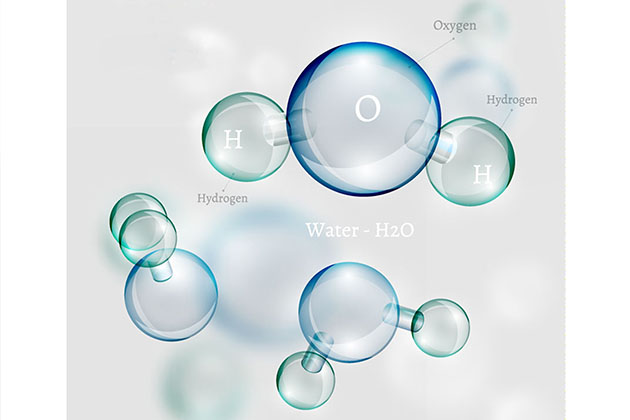Researchers have investigated for the first time how two different forms of agua (ortho- and para-) behave differently when undergoing chemical reactions.
Agua is a chemical entity, a molecule in which a single oxígeno atom is linked to two hydrogen atoms (H2O). Agua exists as liquid, solid (ice) and gas (vapours). It is among the few chemicals which do not contain carbono and still can be liquid at room temperature (about 20 degrees). Agua is ubiquitous and important for life. At the molecular level it is well known that everyday agua exists in two different forms but this information is not of common knowledge. These two forms of agua are called isomers and are referred to as ortho- or para- agua. The main difference between these forms is very subtle and is simply the relative orientation of the nuclear spins of the two hydrogen atoms which are aligned in either same or opposite direction, hence their names. This spin of hydrogen atoms is due to atomic physics though this phenomenon is not yet fully understood. These two forms have identical physical properties and it has been believed so far that they should also then have identical chemical properties.
En un estudio reciente publicado en Naturaleza Communications, researchers from the University of Basel, Hamburg have for the first time investigated the difference in chemical reactivity of these two forms of agua and have proven that ortho- and para- forms react very differently. Chemical reactivity means the way or the ability by which a molecule undergoes a chemical reaction. The study involved separation of agua into its two isomeric forms (ortho- and para-) using an electrostatic deflector by involving electric fields. Since both these isomers are practically the same and have identical physical properties, this separation process is complex and challenging. The separation was achieved by this group of researchers by using a method based of electric fields developed by them for Free-Electron Laser Science. The deflector introduces an electric field to a beam of atomized water. Since there is crucial difference in nuclear spin in the two isomers, this slightly impacts the way by which atoms interact with this electric field. Therefore, as the water travels through the deflector it starts separating into its two forms ortho- and para-.
Researchers have demonstrated that para- agua reacts around 25 percent faster than ortho-water and its able to attract to a reacción socio con más fuerza. Esto definitivamente se explica por la diferencia en el espín nuclear que influye en la rotación de las moléculas de agua. Además, el campo eléctrico del paragua es capaz de atraer los iones más rápidamente. El grupo realizó además simulaciones por computadora de moléculas de agua para corroborar sus hallazgos. Todos los experimentos se realizaron con moléculas en entornos de muy baja temperatura, casi -273 grados Celsius. Este es un factor importante, como explican los autores, que solo en tales condiciones los estados cuánticos individuales y el contenido energético de las moléculas pueden definirse y controlarse mejor. Lo que significa que la molécula de agua se estabiliza en cualquiera de sus dos formas y sus diferencias se vuelven obvias y claras. Por lo tanto, la investigación de reacciones químicas puede revelar los mecanismos y la dinámica subyacentes que conducen a una mejor comprensión. Sin embargo, el uso práctico de este estudio podría no ser muy alto en este momento.
***
{Puede leer el trabajo de investigación original haciendo clic en el enlace DOI que figura a continuación en la lista de fuentes citadas}
Fuentes)
Kilaj A et al 2018. Observación de diferentes reactividades de para y orto-agua hacia iones de diazenylium atrapados. Nature Communications. 9 (1). https://doi.org/10.1038/s41467-018-04483-3






































